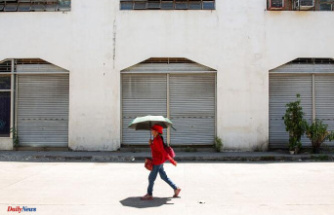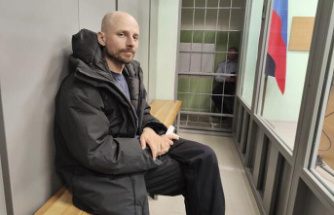The view from the top of an east London tower block was breathtaking.
Lund Point on the Carpenters Estate, Stratford was our window onto London 2012 - a magnificent vantage point overlooking Olympic stadium.
This tower was the heart of a large BBC broadcasting operation. Some flats were occupied by residents. Others were converted into studios for TV and radio, newsrooms and broadcast galleries.
It was more than just sport. This was also where the news came from for several weeks. Here were broadcast the BBC's flagship news programs at six and ten o’clock - 57 live bulletins.
The BBC News ended its coverage on Sunday, 9 September 2012 with a montage featuring the best Olympic moments.
It was the end of a great sporting summer for broadcasters, athletes and viewers. For those who lived here, it meant the end of a glorious sporting summer.
It's almost as if the time had stopped a decade ago. The tower is still standing.
The Carpenters Estate is just a short distance from the London Stadium and other venues in Queen Elizabeth Park.
This is the land that was reclaimed at a huge cost, turning its grimy industrial past into a bustling hub of construction activity. The area is now home to housing, university blocks, and a cultural district.
The Carpenters Estate was not saved. The new steel and glass towers surrounding it, which highlight its shoddiness but are completely disconnected from it, make it even more obvious.
Is this surprising? It's not like some people didn't know.
Warren Lubin was living on Lund Point's 20th floor in 2012 when the Games started. The Evening Standard interviewed him during the Olympics.
According to him, "Don't get it wrong, I love the Olympics and the thrill that bumping into George Alagiah and Huw Edwards on the way up to my flat"; however, the truth is that the Games will soon be over and we will be left with a shameful situation in which people are forced from their homes.
A decade later, the home of Mr Lubin, a one-bedroom apartment at the top end of Lund Point, is still unchanged. He is the last council tenant.
The building is not only his, but almost. Out of the 121 flats in the block, only 10 are occupied. Private tenants renting from owners of their homes are the other residents.
"Nothing has ever happened. Absolutely nothing. It's both shocking and embarrassing.
It's been weird. Strangely, it is now my normal routine. I enjoy the peace and quiet. There has been no upkeep, and all the flats that could have been used are now empty."
When Newham council began moving tenants out of this block, along with its high-rise siblings Dennison Point, and James Riley Point, in the mid 2000s, the estate and community were left in uncertainty.
They were together the landmarks that defined the estate's skyline and identity. They were in dire need of tender loving care and were somewhat dilapidated. Residents say that there wasn't anything wrong with them. Solid concrete. Structurally sound.
Soon, nearly 400 flats were gone. The estate was empty of almost half its residents and the community was hollowed out.
Because there was no plan to redevelop the property before it occurred, Mr Lubin claims that it was an illegal and wrong decanting process. He claims that if more tenants knew their rights, they would have stayed.
Sir Robin Wales, former mayor of Newham who initiated the process, rejects Mr Lubin's theory. He stated that he was very clear about his plans to completely demolish the estate.
"We were going build thousands of new homes here, as well as elsewhere in the borough. You must develop if you want housing. We had a plan.
"Sometimes people don’t want to hear."
This led to the current situation where buildings are still standing, but people are rare and far between.
The lights were kept on, water and electricity have been connected as usual, and in every block, security guards and wardens have been on call round-the-clock since 2017, after the Grenfell fire.
"It's costing them huge amounts to keep them operating even though there are only few of us," stated Mr Lubin.
Although Newham Council declined to disclose the exact amount, once you add in the loss rent and council tax and the cost of housing estate's former tenants, it could easily run into the millions.
The Dennison Point's 23-storey Dennison Point has 11th-floor flats that are boarded up. One of them has a door and protective metal grille. June Benn, a 79-year old woman, lives there.
She was one the first tenants to move into the estate in late 1960. Today, she is one of only twelve residents remaining in this block.
She claims that many residents were forced to move because they didn't want them to. She is a tenant and wouldn't change.
Ms. Benn admits that it is a strange existence.
"The place is going downhill. I used to know everyone. I no longer see everyone. But I don't see why anyone would want me to leave. They have heard me tell them that I'm comfortable here, so I'm staying.
"My family doesn't like me being there because I am alone and isolated, but as far as my concerns go I will stay unless offered something suitable which must be close here.
"They offered me a deal a few years back to get me out, but it wasn’t enough to purchase a garden shed."
This story is about a community that has been frozen in time. It tells the tale of two people: those who stayed and those whom they left.
Pat Hamid and Abdul, who were decanted in Dennison Point in 2011 a few months prior to the Olympics, were among those who left.
They had been there for 29 years.
Mrs Hamid stated that there was nothing wrong in her flat. Big rooms, nice kitchen. I was on the fifth level. They said they would redo everything.
They were then moved to Holden Point, a sheltered housing complex on the opposite side of Stratford.
The Hamids were not familiar with their new locale.
"I didn't know anything about the end of Stratford." Mrs Hamid said that she had only known the area around Carpenters.
They were not keen to leave Lund Point but they were assured that they could return - a "right of return" after the estate was rebuilt.
Real life intervened. Mr Hamid fell ill.
They had abandoned any thought of returning by the time he died in 2020 and had settled in their sheltered block, with wardens who could be summoned at the touch of a buzzer.
Mrs Hamid is shocked that her block hasn't been demolished and that no regeneration work has begun.
"Officially, it's great that you have council tenancies for those who need housing. But at the end they seem to think that you're a commodity. They believe that if they want to do something, they will do it.
"But they haven’t done anything. This is the problem. We were moved. I'm sure that older tenants, like me, won't be returning. No.
According to her, the latest plans for a redevelopment could take up to 15 years.
"In 15 years, I will be more than 100." Perhaps I can go back to it and haunt it."
Residents claim this is a grave failure of the legacy.
It's a story about protest and politics, suspicions and distrust.
Most importantly, however, is inactivity.
Aidan White, the founder of Newham Voices online newspaper, stated that it was a decade wasted. It's hard to believe that there has been a significant loss of community. They feel it.
Since the Olympics were announced, the Carpenters have been a popular piece of real estate.
Land values began to rise after the Games were granted to London in 2005.
Developers were attracted to this site because it was located just a few minutes from the centre.
A new huge shopping center was planned and the Stratford international railway station was under construction.
However, progress was slow and stalled because of residents who were suspicious of the intentions of the mayor, and had fears about gentrification, being priced-out, or being forced to leave.
Sir Robin says it best: "That's what happens when the'renta-Trots’ get involved. If you oppose development, you're opposing housing.
"I'm careful to distinguish between the two. I sympathize, and I sympathized with those who refused to move.
"But against this I wanted to build thousands more homes, and most importantly, jobs too. It must be balanced."
The estate's tenants group created plans in 2009. The plans required some demolition, but maintained the essence of the estate. These plans were rejected.
After loud protests by tenants and some lecturers backing University College London's proposal to build a new campus, the University College London proposal was pulled in 2013. It is currently building in the Olympic Park itself.
In protest of the lack of affordable housing east London, a group made up of single mothers occupied the low-rise block in the estate two years later.
Newham, London's poorest borough, had more than 25,000 people waiting to be placed on the housing wait list. This was causing it to get a bad reputation.
Sir Robin, the object of growing hostility was able to throw the dice again and produce plans that involved a joint venture with either a developer or a housing association.
He defends his efforts.
"If I was still there, we would have been building years ago." We would have used spades to dig the ground."
In 2018, events took an unexpected turn due to local Labour infighting and the politics of Newham.
Sir Robin, who served 16 years as mayor of Newham, was overthrown by Rokshana Fiaz (a fellow councillor from Newham), who was voted in by a large influx of Momentum activists and supporters of Jeremy Corbyn.
She stood on a platform that included a new approach for housing, even though Sir Robin stated that the Carpenters scandal did not have an effect.
He said, "Not a jot."
His successor stated that she was against the demolition of Carpenters and promised more affordable homes and community engagement to make it an "community-led” regeneration project.
But, she struggled to make progress in the four first years of her presidency.
Last December, a new masterplan was created for the estate and submitted to a ballot.
This proposal calls for a tripling of the number of homes, to more than 2000. Half of these homes would be at social rent levels. The remainder would be available for private sale.
At the moment, Sir Robin has condemned two tower blocks.
Out of 345 participants, 252 people voted "yes" which is 73%.
Further controversy was created by this process. Some raised further questions, including protest groups that also opposed Sir Robin’s plans and Sian Berry of the Greens, who was chair of the London Assembly’s housing committee.
Pauline Clarke (landlady at Carpenters Arms pub, which is located in the shadows of Lund Point) says that it's difficult to explain what happened.
"Everyone I spoke with said they voted no." This is not something you can find.
This explanation might be quite simple. Tenants who had moved out of the estate many years ago and retained their right to return were also eligible for a vote.
They had nothing to lose voting for the referendum - and the chance to return to Stratford's refurbished estate, though they are not required to.
It was a major breakthrough for Ms Fiaz just as she sought to re-elect herself this month. Finally, the first steps towards an Olympic housing legacy were taken.
She also took aim at her Labour predecessor. "After years and false promises, the failures in the past, I am overjoyed that residents of Carpenters Estate, including those with a right of return, have decided to support this people-powered plan."
Aidan White of Newham Voices said it was due to a "fantastic deal of fatigue".
People just want to move on. This is the only way to go. There's nothing you can do if the council says "it's this or no way".
It can feel like the last resort for some.
Adeel Nauyeck stated, "We are desperate to see some life restored in the place."
It's been a joke. "We've been totally ignored, and the estate has been allowed decline."
Former chef Mr Nauyeck has lived in the area for over 30 years. He moved in 2012 with his mother, three sons, and wife from Dennison Point to a four-bedroom home at the estate's heart. He has watched the estate fall apart bit by bit.
Tension between council tenants like him and leaseholders with different priorities is one reason there has been so much stagnation.
"When Stratford received the games, suddenly leaflets started to arrive at people's homes, telling them how their home had increased in value and how much they could get if it was rented out. Many leaseholders took advantage of the opportunity to rent them out and then moved on. This created a rental market that saw a steady turnover of tenants.
"The estate was never settled. "There was no community."
His children attended the local primary school, and now they attend one of the new academies on the Olympic Park. Their friends are already in the area, and Mr Nauyeck wants to stay.
Others feel undeserved anxiety and uncertainty.
After all, the bulldozers will be arriving. Dennison Point, most low-rise blocks and homes will be demolished.
Joan Hunnibale (84), moved into her three-bedroom home in 1969. She purchased the property under right-to buy in 1980s. It is currently being demolished.
She is looking for clarity on when it will occur.
"It has been allowed to deteriorate. It's possible to only take a place down for so many years. People eventually get tired of the place and decide to leave," she stated.
Doreen Ward (87) is far more optimistic. She lives in a four-bedroom home with a beautiful garden in the street she calls "the most beautiful on the entire estate". She wants to continue living in the house she has lived in for over 50 years.
People try to interest you in smaller, more suitable places. They try to convince me that I would rather go somewhere smaller and more suitable when I have 16 family members coming over for Christmas dinner.
"I can walk to shops from here. It's so convenient. It's so convenient. I have a sister in Billericay and one who is ill in Herne Bay. Although I don't drive, it's easy to travel by train.
She has opposed every proposal to the estate thus far and voted against the latest.
She said, "You get that feeling they want it to be so ugly and unliveable they eventually get their way and flatten it all."
"Reluctantly," Mr Lubin voted for the plans. He isn't happy about the possibility of housing double.
"Something must happen. What would it mean if the vote was 'no? What would it mean if the vote was 'no'?
Ms Fiaz seems to have a more positive outlook on the impending chaos.
The estate's green spaces will be spruced up, and the street railings will be painted. The Dovetail is a community drop in that displays a model of the estate's plans. Yoga sessions, art classes, and other activities are available. The website is bright and cheery and the newsletter contains regular updates.
These plans will they survive the upheavals? How much money can be raised to build affordable housing on a site that is being developed depends on the viability of such a project.
This income subsidises affordability, which allows more social rent apartments to be available.
It is important to ask how the council adds up the numbers and how long it takes to drag out regeneration.
To deliver the project, the local authority created its own housing company. It will be subject to all the same risks that any developer: economic recession, rising interest rates and inflation, and spiralling energy prices.
Council papers provide clear guidance that suggests that initial promises on timescale, design, and the mix of tenure might change.
There is no set formula.
A newsletter has just informed Mr Lubin that the refurbishment of Lund Point won't be complete until 2026.
The refurbishment of James Riley Point is expected to begin this fall.
The cost of renewing this block has been rising steadily over the last few years. It now stands at PS35m.
The council faces another problem with four families and leaseholders that still live in the block. Before the renovation can begin, they will have to be removed and bought out.
They have been the sole occupants of a block with 130 flats for well over a decade.
This is where some children call home for their entire lives.
They are now feeling the pressure to leave, with all the developments in the redevelopment at their doorstep.
Negotiations are underway to avoid compulsory purchases. This would make it more expensive and take up even more time.
The estate now has one shop, located next to The Dovetail which is the centre for community engagement. The owners don't know when they can expect demolition or if they will be offered new premises.
The footfall has dropped so much that business has suffered in the past decade.
An unlikely hero has emerged: West Ham United supporters, dressed in clarets and blue.
They travel through the estate to get to the London Stadium. The club leases the stadium.
This is an economic advantage that can be weighed against complaints from some residents about fans urinating in their gardens.
The Carpenters Arms is the closest pub to the stadium and is often packed on match days.
West Ham's long run in the Europa Cup meant that they reached the semi-final. But Pauline Clarke, the landlady, doesn't know how much time she has left.
She and her staff set up fencing at the pub hours before every match. Security guards are also present to keep rival fans from getting into trouble.
Academics have been fascinated by the state of paralysis that has gripped Carpenters Estate. Master's dissertations can be freely accessed, covering a variety of topics.
A secondary school nearby invited pupils to visit and filled out questionnaires about the urban environment and streetscape. Their teacher reminded them to be mindful of the noise and that people live here.
These people would prefer to be studied as an example of the potential of the Olympic Games to transform communities.
However, it will be nearly 25 years since the glory days of London 2012 and all the promises to transform the fortunes for people in east London. By the time that regeneration work is complete, however,
Jamie Jensen, an ex-member of the neighborhood forum, stated: "If Newham had done the same thing they now propose in 2009, instead of leaving the estate vacant over the past 10+ years, hundreds could have lived in decent homes for the past decade."
Sir Robin stated that he was "in despair” at the lack housing.
"We would have built. We had a wonderful opportunity, and those who haven’t gotten homes are the ones who have paid the price."
Although he didn't name Ms Fiaz, he said that he would not criticize her but that "in the end, whoever is running the council must take responsibility for it."
According to Mr Lubin, hundreds of lives were affected by the worst.
"This was an opportunity to create a model Olympic regeneration that everyone could be proud to point to.
"Instead, what do we have?"
The view from the top of an east London tower block is still breathtaking.












